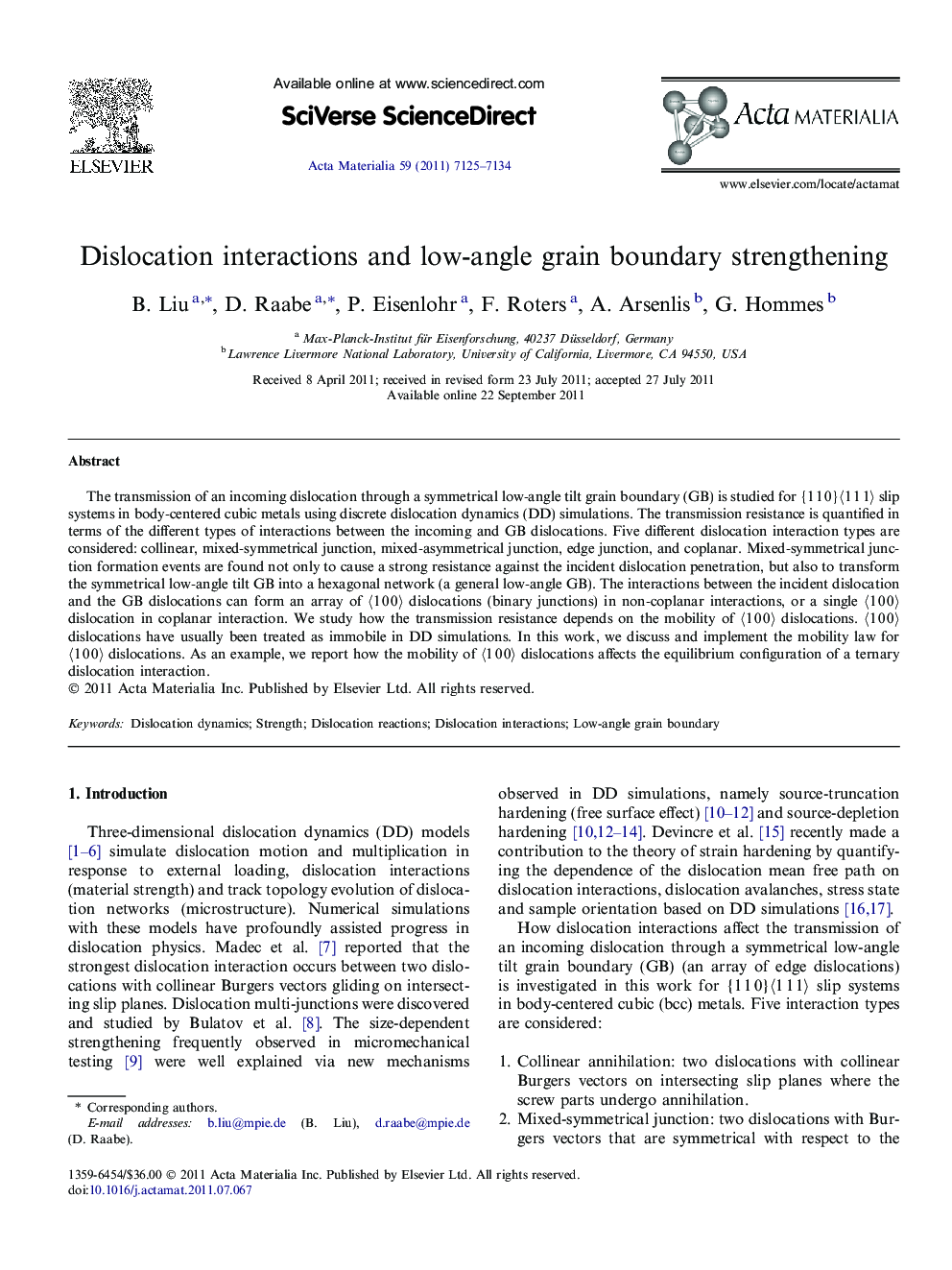| Article ID | Journal | Published Year | Pages | File Type |
|---|---|---|---|---|
| 10620408 | Acta Materialia | 2011 | 10 Pages |
Abstract
The transmission of an incoming dislocation through a symmetrical low-angle tilt grain boundary (GB) is studied for {1Â 1Â 0}ã1Â 1Â 1ã slip systems in body-centered cubic metals using discrete dislocation dynamics (DD) simulations. The transmission resistance is quantified in terms of the different types of interactions between the incoming and GB dislocations. Five different dislocation interaction types are considered: collinear, mixed-symmetrical junction, mixed-asymmetrical junction, edge junction, and coplanar. Mixed-symmetrical junction formation events are found not only to cause a strong resistance against the incident dislocation penetration, but also to transform the symmetrical low-angle tilt GB into a hexagonal network (a general low-angle GB). The interactions between the incident dislocation and the GB dislocations can form an array of ã1Â 0Â 0ã dislocations (binary junctions) in non-coplanar interactions, or a single ã1Â 0Â 0ã dislocation in coplanar interaction. We study how the transmission resistance depends on the mobility of ã1Â 0Â 0ã dislocations. ã1Â 0Â 0ã dislocations have usually been treated as immobile in DD simulations. In this work, we discuss and implement the mobility law for ã1Â 0Â 0ã dislocations. As an example, we report how the mobility of ã1Â 0Â 0ã dislocations affects the equilibrium configuration of a ternary dislocation interaction.
Related Topics
Physical Sciences and Engineering
Materials Science
Ceramics and Composites
Authors
B. Liu, D. Raabe, P. Eisenlohr, F. Roters, A. Arsenlis, G. Hommes,
